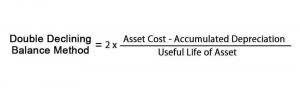
Depending on the type of accounting system used by the business, each financial transaction is recorded based on supporting documentation. That documentation may be a receipt, an invoice, a purchase order, or some similar type of financial record showing that the transaction took place. A bookkeeper checks for errors when creating reports and managing the general ledger. You will check bank deposits for fraud, fix balance sheet errors, and maintain accurate payroll records. Only an accountant licensed to do so can prepare certified financial statements for lenders, buyers and investors. However, your bookkeeper can generate internal management reports for your business.
Best Accounting Software for Small Businesses of 2024
Our bookkeepers here at Bench can do your books for you entirely online. We’ll also give you easy-to-use software to produce financial statements, keep track of your daily expenses, and help make tax time a breeze. Try setting aside and scheduling a ‘bookkeeping day’ once a month to stay on top of your financials.
The Accounting Cycle (Part
Learners are advised to conduct additional research to ensure that courses and other credentials pursued meet their personal, professional, and financial goals. While bookkeepers can sit for the CB exam sections in any order, AIPB recommends taking part one before scheduling part two. To maintain certification, you need to earn at least 60 continuing education credits every three years. When it comes to budgeting for bookkeeping, the difference hinges on whether you hire or manage using software tools. Bookkeeping beginners need quick wins to get started quickly and efficiently.
Accounting software
Generally speaking, your transactions fall into five account types—assets, liabilities, equity, revenue, and expenses. Individual line items are then broken down into subcategories called accounts. In our ice cream shop example, some accounts in your ledger might be “revenue-ice cream sales”, “expenses-ice cream ingredients”, etc. Additionally, monitor your outstanding bills (accounts payable) and pay them on time to maintain good relationships with suppliers, avoid late fees, and manage your business’s credit rating. Your chart of accounts should include accounts for assets, liabilities, equity, income, and expenses.

Finding the right bookkeeping method for you

In the accounting software, the primary journal entry for total payroll is a debit to the compensation account and credits cash. After you have a bookkeeping system in mind, the next step is to pick an accounting software. Spreadsheets, https://www.bookstime.com/ such as Microsoft Excel, can be used for simple bookkeeping. More commonly, entrepreneurs use comprehensive accounting software like QuickBooks that can handle a larger volume of transactions and provide a deeper analysis.

- Most small businesses will either do their books themselves or outsource the work to a professional.
- They also handle financial statements, file tax returns, and advise on financial strategy.
- Additionally, monitor your outstanding bills (accounts payable) and pay them on time to maintain good relationships with suppliers, avoid late fees, and manage your business’s credit rating.
- Accountants provide a higher level of financial analysis and planning.
- Double-entry is more complex, but also more robust, and more suitable for established businesses that are past the hobby stage.
- By keeping track of every dollar you spend, you can gain insight into where your money is going and make informed decisions about allocating your resources.
- As a detail-oriented professional, you would play a crucial role in the organization and growth of companies from small businesses to major corporations.
Once your bank accounts have been reconciled and any adjustments made in your recording tool of choice, you’ll want to close the month and print financial statements. A bookkeeping checklist outlines the tasks and responsibilities you need to do regularly to keep the books up-to-date and accurate. It serves as a road map to ensure you correctly record and report all necessary financial transactions are recorded and reported correctly. Finally, if you want someone else to do your bookkeeping for you, you could sign up for a cloud-based bookkeeping service like Bench. We’ll do your bookkeeping for you, prepare monthly financial statements, give you expense reports with actionable financial insights, and we’ll even file your taxes for you when the time comes.
If you wait until the end of the year to reconcile or get your financial transactions in order, you won’t know if you or your bank made a mistake until you’re buried in paperwork at tax time. Regularly organizing and updating your books can help you catch that erroneous overdraft fee today, rather than six months from now, when it’s too late to bring up. Lenders and investors want a clear idea of your business’ financial state before giving you money.
Where to start
- Your bookkeeper might also prepare other auxiliary reports for your business, like accounts payable and accounts receivable aging reports.
- The next part of the bookkeeping cycle is determining the financial effects of the transactions.
- Bookkeeping accuracy and reliability are essential for businesses to succeed for staff, executives, customers, and partners.
- At tax time, the burden is on you to show the validity of all of your expenses, so keeping supporting documents for your financial data like receipts and records is crucial.
- Purchase receipts should always be kept as proof that the purchases took place.
- Asset accounts start with the cash account since cash is perfectly liquid.
The American Institute of Professional Bookkeepers, for example, grants the Certified Bookkeeper Designation. To earn this certification, you must submit evidence of at least two years of full-time bookkeeping experience, sign a code of ethics, and pass a four-part certification exam. There are a couple of U.S. professional organizations that can certify those who want to become bookkeepers for small businesses. bookkeeping 101 This process can be as simple as preparing an invoice for a customer to setting up your electric bill to be paid. One of the great things about using a software is that the debits and credits involved in creating an invoice are all handled behind the scenes. If you’re using double-entry accounting, which is recommended, you will have a corresponding credit entry for any debit entry you make, and vice versa.

Recent Comments